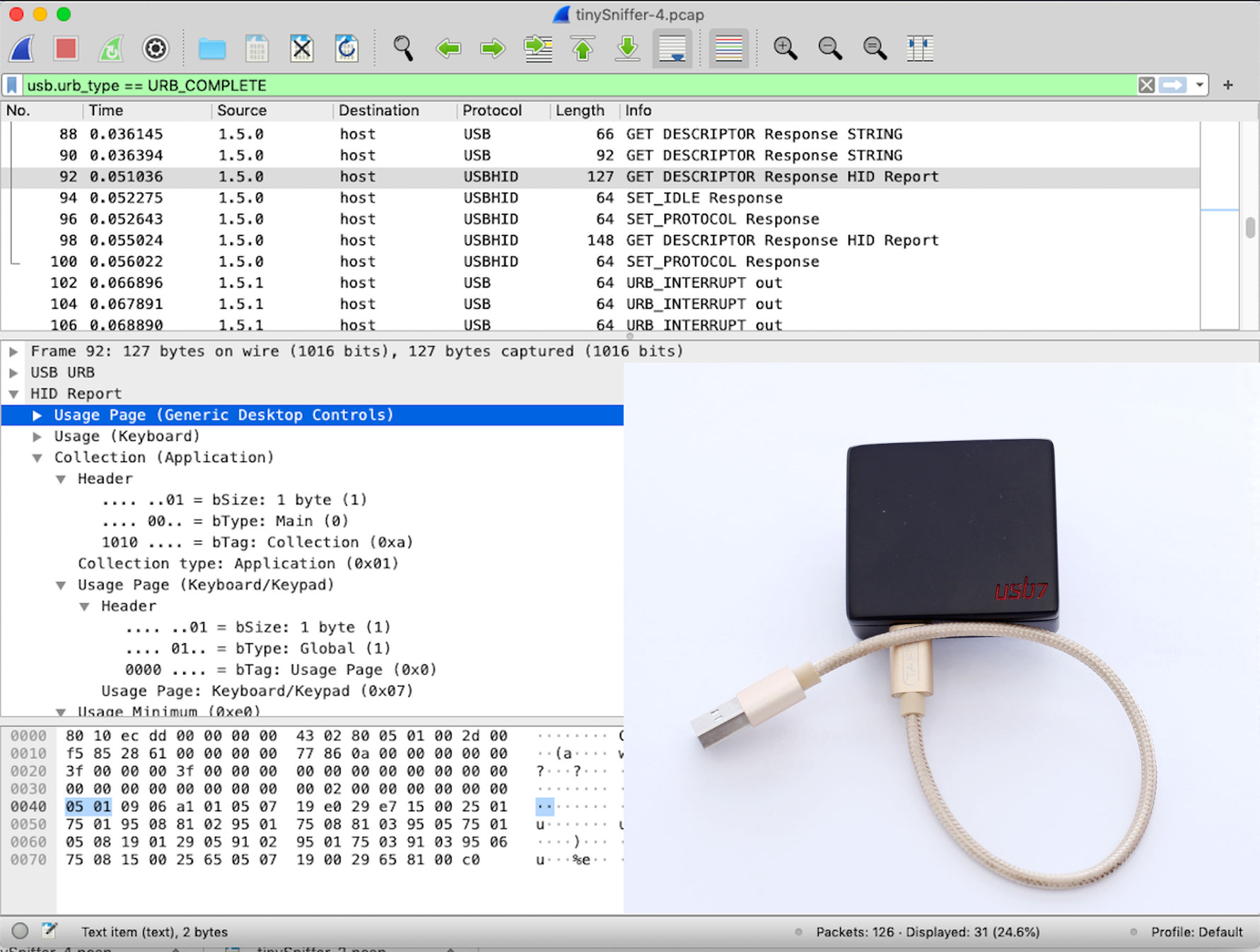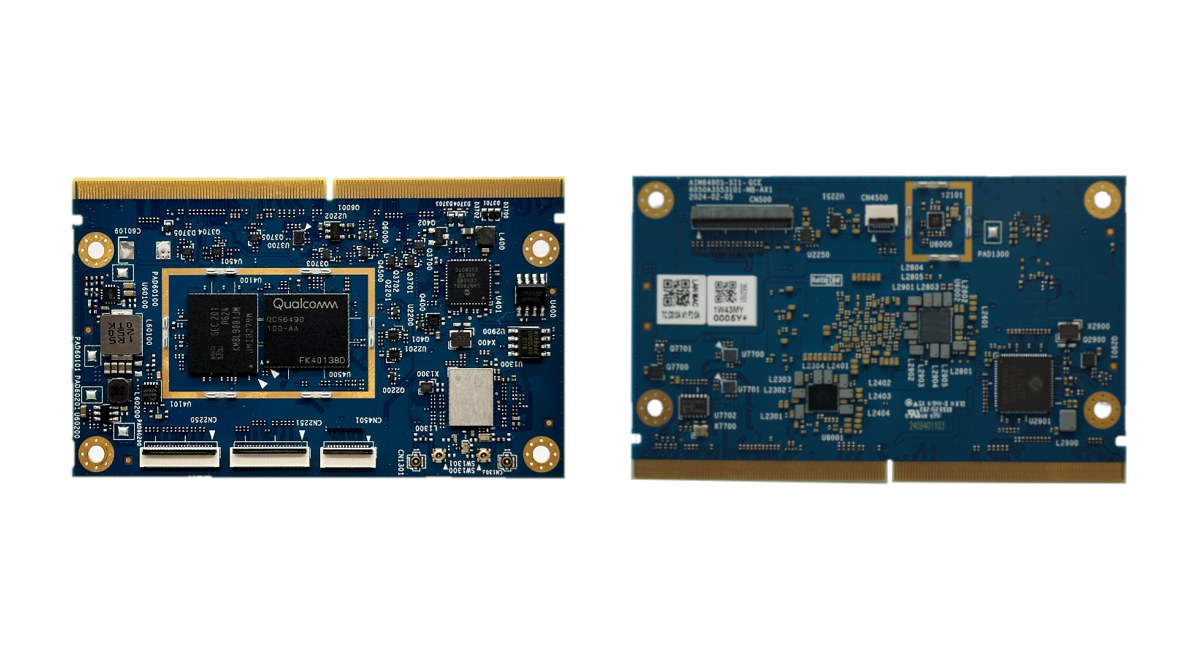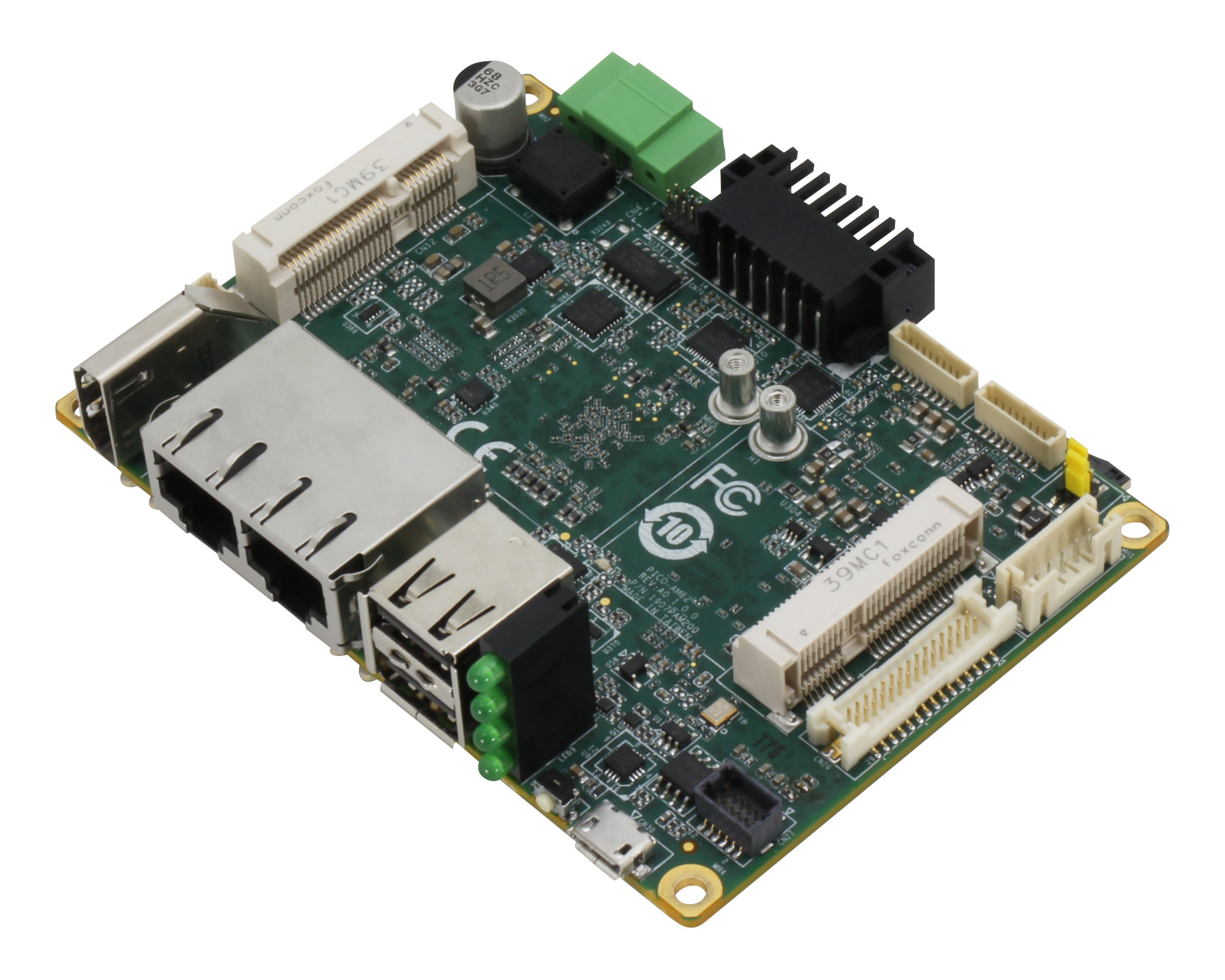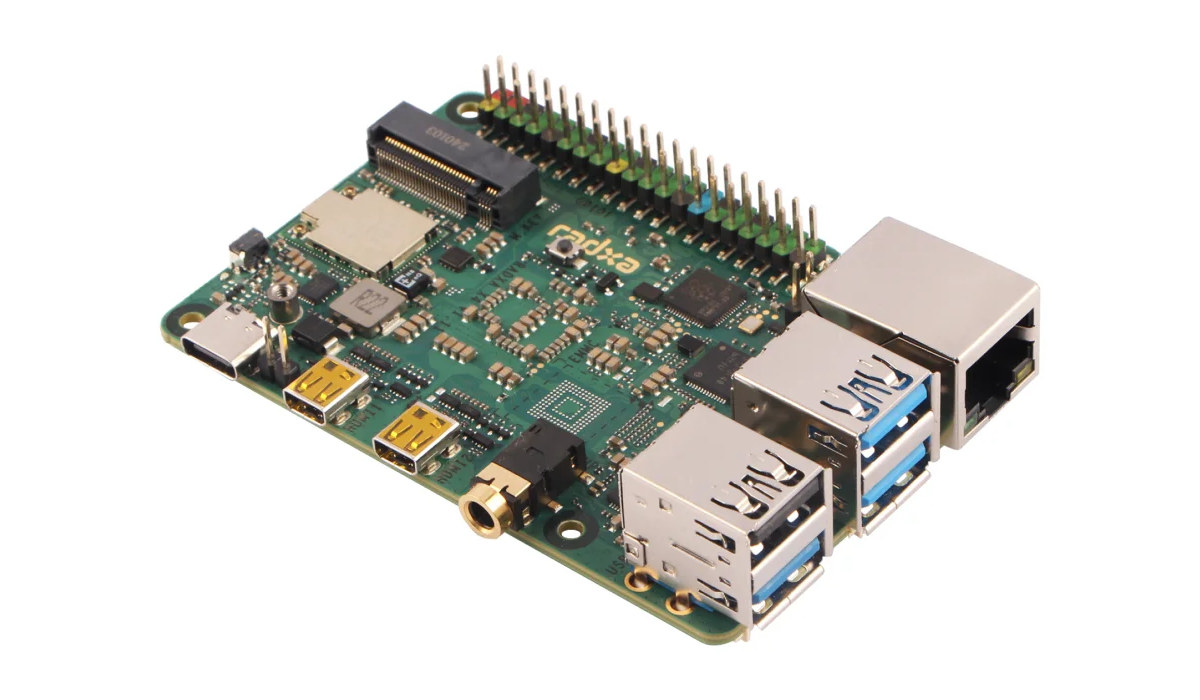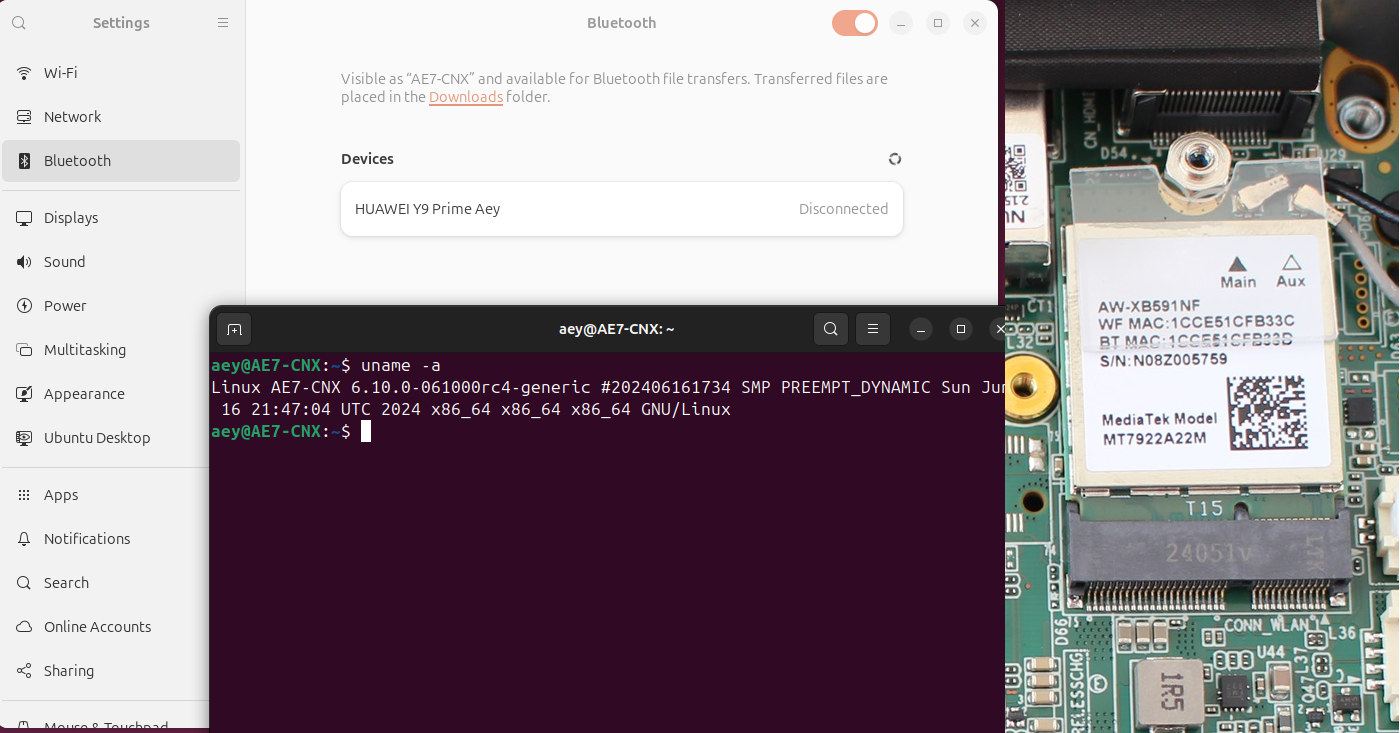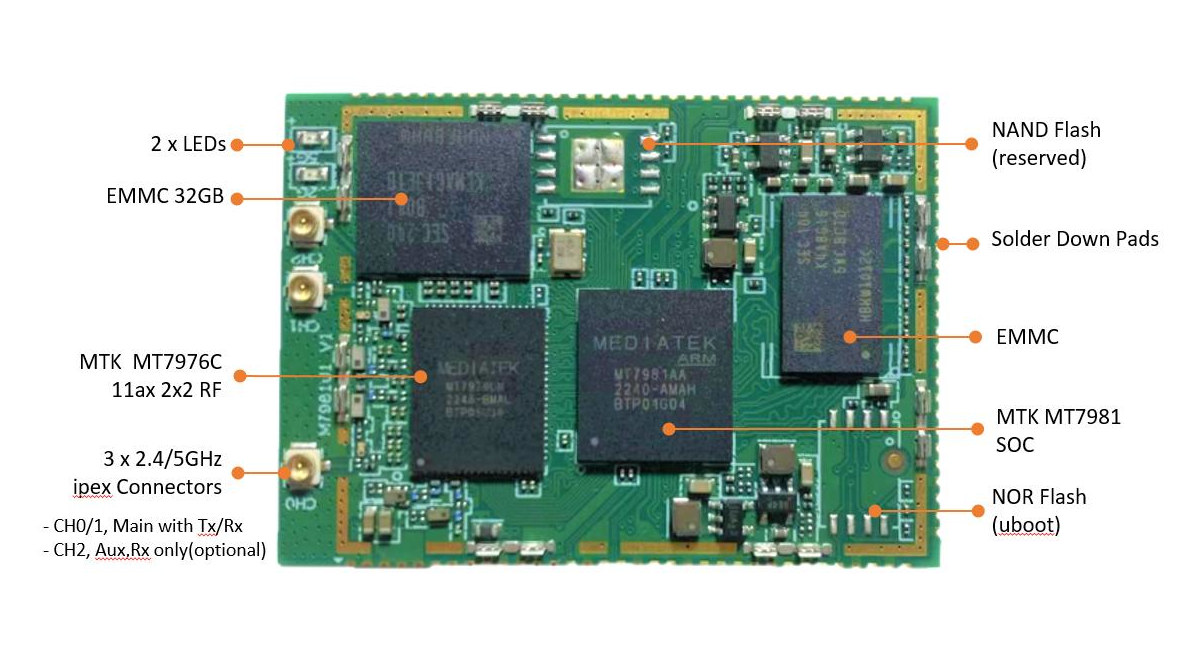TinySniffer is a USB sniffer based on the Allwinner H3-powered NanoPi Neo Air SBC, designed to capture USB 1.x and 2.0 packets remotely, and whose captured data is compatible with the popular Wireshark packet analyzer tool. Wireshark can already be used to capture USB packets on its own and I reverse-engineered a USB capture video solution that way in the past, but this method has some limitations, for instance, it does not capture some low-level USB packets, in which case a hardware USB sniffer like Total Phase Beagle USB, the PhyWhisperer USB, or the tinySniffer is required. The micro USB OTG port of the NanoPi NEO Air SBC is connected to the host computer and the company added a USB 2.0 Type-A port connected to the USB interface on the GPIO header to connect a device under test such as a USB keyboard, a USB Ethernet dongle, a USB printer, […]
SagireEdge AI 600 SMARC SoM and devkit feature Qualcomm QCS6490 AIoT processor for Edge AI applications
Sagire AI’s SagireEdge AI 600 is a SMARC-compliant system-on-module (SoM) and a development kit based on Qualcomm QCS6490 octa-core Cortex-A78/A55 IoT processor and designed for Edge AI applications. The module comes with 8GB LPDDR5 and 128GB UFS storage, a WiFi 6E and Bluetooth 5.5 wireless module, a CAN Bus controller, and on-module camera and audio input connectors. Its MXM 3.0 edge connector exposes additional camera interfaces, a MIPI DSI display interface, PCIe Gen3 x2, gigabit Ethernet, a few USB interfaces, and a range of low-speed I/Os. SagireEdge AI 600 SoM specifications: SoC – Qualcomm QCS6490 CPU – Octa-core Kryo 670 with 1x Gold Plus core (Cortex-A78) @ 2.7 GHz, 3x Gold cores (Cortex-A78) @ 2.4 GHz, 4x Silver cores (Cortex-A55) @ up to 1.9 GHz GPU – Adreno 643L GPU @ 812 MHz with support for Open GL ES 3.2, Open CL 2.0, Vulkan 1.x, DX FL 12 DSP – […]
Lattice Semi Certus-NX-09 and Certus-NX-28 small footprint, low-power FPGAs feature optional PCIe Gen2 interface
Lattice Semiconductor has added two new devices to its small, low-power Lattice Certus-NX FPGA family, namely the Certus-NX-28 and Certus-NX-09 available in multiple packages and designed for communications, computing, industrial, and automotive applications. The Certus-NX FPGAs enable power-efficient PCIe Gen 2 with up to 4 times lower power compared to other FPGAs, and ultra-small form factor with up to 2 times more I/O per mm2 and PCIe and Gigabit Ethernet implementation in packages as small as 36 mm2. The company also claims high reliability and security with up to 100 times lower soft error rate, built-in SEC (Soft Error Correction) and memory block ECC for SEU (Single-Even Upset) protection, and up to 12 times faster instant-on configuration performance. The Lattice Certus-NX family is now comprised of four SKUs: LFD2NX-9, LFD2NX-17, LFD2NX-28, and LFD2NX-40 whose main highlights are shown in the comparison table below. The Certus-NX are available in various packages […]
The Blette Stick relies on Bluetooth 5.0 LE for off-grid messaging with up to 1.1km range
The Blette Stick is a Bluetooth 5.0 LE USB-C dongle designed to be attached to an Android smartphone in order to provide off-grid messaging and GPS coordinates sharing capabilities with a range of up to 1.1km in case WiFi and cellular networks are down. CNX Software readers may also be familiar with Meshtastic devices relying on WiFi to connect to the smartphone with Bluetooth and to other nodes using LoRaWAN to enable off-grid messaging while trekking or during emergencies. The Blettle Stick does something similar to the Meshtastic project but with Bluetooth LE long-range communication instead of Bluetooth+LoRaWAN. While the range will be shorter and limited to around 1km (line-of-sight), the plug-and-play design will make it easier to use for typical users who are not technically savvy. Blettle Stick specifications: SoC – Nordic Semi nRF52 Bluetooth 5.0 LE microcontroller (exact part number not specified, possibly nRF52840) Wireless – Bluetooth 5.0 […]
Texas Instruments AM6232/AM6254-powered SBC and industrial IoT gateway offered with a 20-year lifespan
AAEON’s PICO-AM62 and SRG-AM62 are respectively a single board computer (SBC) and an industrial IoT gateway powered by Texas Instruments AM6232 or AM6254 Sitara Arm Cortex-A53/M4 SoC, designed to operate within the -40°C to 85°C temperature range, and offered with a 20-year lifespan. The SRG-AM62 gateway simply houses the PICO-AM62 pico-ITX SBC within a metal case so both offer dual gigabit Ethernet, HDMI 1.4 port, and two USB 2.0 as well as communication interfaces such as RS-232/422/485 and CAN Bus. Designed to be operated in industrial settings, the systems support a wide 9V to 36V input voltage range. PICO-AM62 SBC and SRG-AM62 gateway specifications: SoC – Texas Instruments AM623x either AM6232 Sitara with dual-core Arm Cortex-A53 processor @ up to 1.4 GHz, Cortex-M4F real-time core @ 400 MHz, no 3D GPU AM6254 Sitara with quad-core Arm Cortex-A53 processor @ up to 1.4 GHz, Cortex-M4F real-time core @ 400 MHz, Imagination […]
Radxa X4 low-cost, credit card-sized Intel N100 SBC goes for $60 and up
Radxa X4 is a credit card-sized Intel Processor N100 single board computer (SBC) that costs almost the same as a Raspberry Pi 5 with the 4GB RAM model going for about $60 and the 8GB RAM variant around $80. The x86 SBC offers many of the same features as the Raspberry Pi 5 including dual micro HDMI output, four USB 3.2/2.0 ports, Ethernet and WiFi networking, and the 40-pin GPIO header handled through a Raspberry Pi RP2040 microcontroller. Networking is better with 2.5GbE and WiFi 6, M.2 SSD support is built-in and four to eight times faster compared to PCIe HAT for the Pi 5, and the USB 3.2 ports are capable of 10 Gbps speed. So let’s little not too like, and the main downside is the lack of MIPI CSI and DSI connectors for projects requiring those camera and display interfaces. Radxa X4 specifications: SoC – Intel Processor […]
How to easily enable MediaTek MT7922 Bluetooth on Ubuntu 24.04
MediaTek MT7922 WiFi 6 and Bluetooth 5.3 modules have recently been found in several mini PCs, but Bluetooth would not work in Linux due to a lack of drivers. In this post, we’ll show how to easily enable Bluetooth in MediaTek MT7922 modules when running Ubuntu 24.04. We previously noted that Ian Morrisson submitted a patch adding the IDs for the MT7922 module (Azurewave AW-XB591NF) used in recent GEEKOM mini PCs last March. In theory, you could have rebuilt the Linux kernel, but now that Linux 6.10 has been released, it’s much easier since Canonical has made the Linux 6.10 kernel available for Ubuntu, so we only need to install it and problem solved! Ubuntu 24.04 ships with Linux 6.8, we can see a Bluetooth opcode error in the kernel log.
$39 Acelink SM81 MediaTek Filogic 820 WiFi 6 system-on-module runs OpenWrt 23.05 or Debian 11
Acelink SM81 is a compact (50x36mm) system-on-module based on the MediaTek Filogic 820 (MT7981A/B) processor with WiFi 6 and Ethernet connectivity designed for IoT applications such as routers, access points, and gateways. The wireless module ships with up to 1GB DDR4 memory, a 2MB NOR flash for the bootloader, a 32GB eMMC flash for Linux or an optional NAND flash, and exposes various I/Os such as gigabit Ethernet, USB 3.0, PCIe 2.1, UART, and more through castellated holes. Acelink SM81 specifications: SoC (one or the other) MediaTek MT7981AA (Filogic 820) dual-core processor @ 1.3 GHz MediaTek MT7981BA (Filogic 820) dual-core processor @ 1.3 GHz without PCIe interface System Memory – 1GB DDR4 @ 2133 Mbps Storage 2MB NOR flash for bootloader 16GB or 32GB eMMC flash for main OS (OpenWrt) Footprint for NAND flash Wireless Radio Mode – 2.4GHz 2×2 + 5GHz 3×3 MIMO via MT7976CN RF IC Radio Frequency […]


